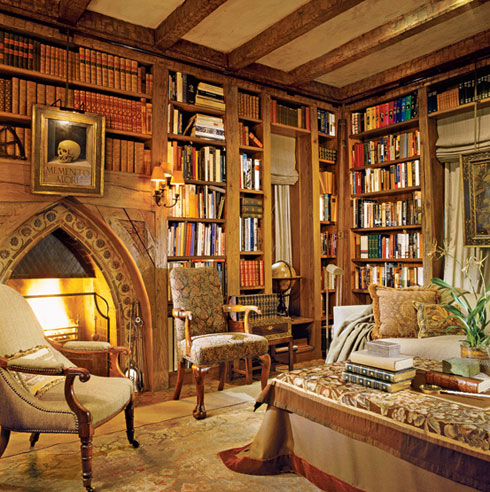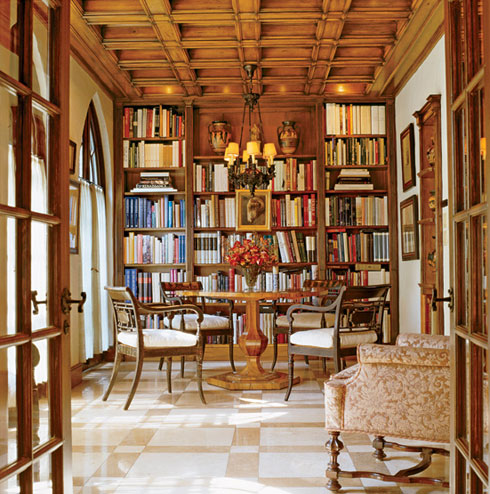 Because of aesthetic as well as functional concerns, furniture selection is one of the most important aspects of the interior design of a library. The furnishings selected for a library should reflect the overall interior design concept of the building.
Because of aesthetic as well as functional concerns, furniture selection is one of the most important aspects of the interior design of a library. The furnishings selected for a library should reflect the overall interior design concept of the building.
In small home library projects with no interior designer, the one who selects the furnishings is you; the owner of the house. In these kinds of projects, the standard offerings of library or commercial furniture manufacturers are usually selected. In large, well-funded projects, some of the furnishings are standard commercial items, while others are designed by architects or interior designers specifically for that library. Custom furnishings are produced by a library or commercial furniture manufacturer or by an architectural woodworking shop. In some projects, an architect, interior designer, or consultant selects standard furnishings and adds special customized features to them. For example, a basic library reading table may be purchased with a custom design on the end panels.

A number of factors affect the cost of purchasing particular furnishings. The price of an item is determined by the volume of items to be purchased; the cost of materials, labor, and finishes; and competition in the marketplace. The larger the quantity of any one kind of item purchased, the lower the price of each item. For example, it is more expensive per unit to buy 10 sections of steel shelving than it is to buy 100 sections. A planning team that decides to buy 25 custom tables this year and 25 of the same tables next year will probably pay more per table than the library that buys all 50 tables at the same time. When all the tables are purchased at one time, the manufacturer has only one factory setup for all 50 tables, prepares a custom finish only one time, buys all of the materials in one order, and ships all of the tables in one truck.
Furniture items used in libraries are designed to withstand heavy use. The joinery, materials, and hardware are engineered to work together to provide a durable product that will last. The cost of engineering a product must be recovered by a manufacturer when the product is sold. Furnishings offered as standard items by a library company have been previously engineered; the shop drawings required for their manufacture are already available. Standard items are, therefore, less expensive than custom items that have to be designed and engineered prior to production. Because most of the design work has already been done on the item, customized features on a standard product, such as a special end panel on a standard table, do not cost as much as a new custom item.

Many library furnishings are made of northern-grown oak because of the availability of that wood. The kind of wood used obviously affects the price of a piece of furniture. Oak furnishings are usually the least expensive, while maple and cherry are slightly more expensive. The cost of materials is sometimes affected by outside conditions; for example, steel-shelving prices are often based on the cost of steel at a particular time.
Most library furniture manufacturers offer a line of standard color finishes on oak, maple, or other woods. These finishes come at a standard price; however, all of the manufacturers will provide furnishings in a special color finish for an extra cost, called an upcharge. The same is true for steel shelving. All companies have standard colors, but will match other colors for an additional cost.
The cost of furniture is also affected by the market at any given time. A manufacturer who is seeking new projects to increase production at a factory will negotiate or bid lower than a manufacturer with a factory that is working to capacity.
In summary, projects with limited budgets usually purchase standard furniture items with standard finishes; all of the items for the project should be purchased at one time. Projects with large budgets usually have some standard furniture items but also include custom-designed and engineered furniture items manufactured from special materials with custom finishes.
[ Gallery Sources ]